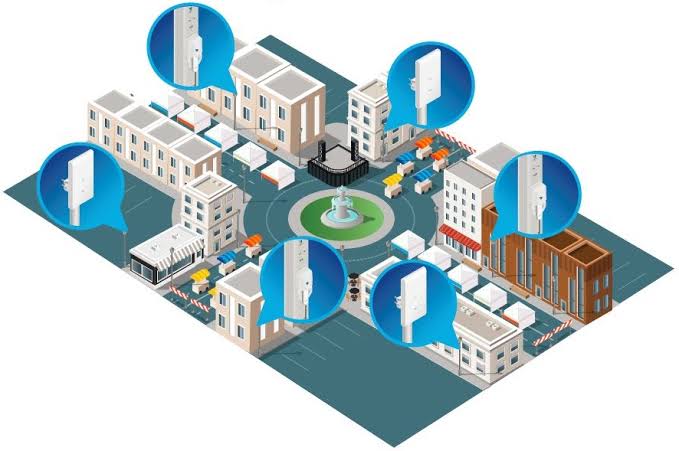WIRELESS NETWORKING
Wireless networking enables devices to communicate over a network without the need for physical cables. It is fundamental to modern connectivity, allowing for mobility, convenience, and flexibility. Here’s an overview of key concepts and components in wireless networking:
1.Types of Wireless Networks
Wi-Fi (Wireless Fidelity):
Purpose:Connects devices within a local area network (LAN), such as in homes, offices, or public spaces.
Standards:Defined by IEEE 802.11 standards (e.g., 802.11n, 802.11ac, 802.11ax).
Frequency Bands:Operates on 2.4 GHz and 5 GHz bands, with newer standards also utilizing the 6 GHz band (Wi-Fi 6E).
Cellular Networks:
Purpose:Provides wide-area coverage for mobile devices, such as smartphones and tablets.
Generations: Includes 2G, 3G, 4G/LTE, and 5G, each offering different speeds and capabilities.
Bluetooth:
Purpose: Connects devices over short distances, typically for personal area networks (PANs) or peripheral devices.
Versions: Includes Bluetooth 4.0 (Low Energy), 4.1, 4.2, and 5.0, each improving range and data transfer rates.
Zigbee and Z-Wave:
Purpose:Used for smart home devices and IoT (Internet of Things) applications, focusing on low power consumption and mesh networking.
Applications: Home automation systems, sensor networks.
2.Components of Wireless Networks
Wireless Access Points (APs):
Function:** Provide connectivity to wireless devices by connecting them to a wired network.
Types:Includes standalone APs and integrated APs in routers.
Routers:
Function: Directs data between devices on a local network and the internet.
Features:Includes built-in wireless capabilities, firewall, and security settings.
Network Interface Cards (NICs):
Function:Enable devices to connect to a wireless network. Built into most modern devices like laptops and smartphones.
Repeaters and Extenders:
Function:Boost and extend the range of a wireless network to cover larger areas or eliminate dead zones.
Antennas:
Function: Enhance the range and signal quality of wireless networks. Can be external or internal to devices.
3. Wireless Network Security
Encryption: Protects data transmitted over the network. Common standards include WPA2 (Wi-Fi Protected Access II) and WPA3.
Authentication:Ensures only authorized users can access the network, using methods like passwords or certificates.
Firewalls:Software or hardware that monitors and controls incoming and outgoing network traffic based on security rules.
4. Network Performance
Bandwidth:The maximum rate of data transfer across the network, affecting speed and performance.
Latency:The time it takes for data to travel from source to destination, impacting responsiveness.
Signal Strength: Affected by distance from the access point and physical obstructions, influencing connection quality.
5. Emerging Technologies
Wi-Fi 6 (802.11ax): Improves speed, capacity, and efficiency, especially in high-density environments.
Wi-Fi 6E: Extends Wi-Fi 6 into the 6 GHz band, offering additional bandwidth and reduced interference.
5G Networks:Provide higher speeds and lower latency compared to 4G LTE, with applications in high-speed mobile internet and IoT.
6. Best Practices for Wireless Networking
Optimal Placement:Position access points centrally and away from obstructions to maximize coverage.
Regular Updates: Keep firmware and software updated to protect against vulnerabilities.
Network Management: Use tools for monitoring performance, managing devices, and optimizing network settings.
